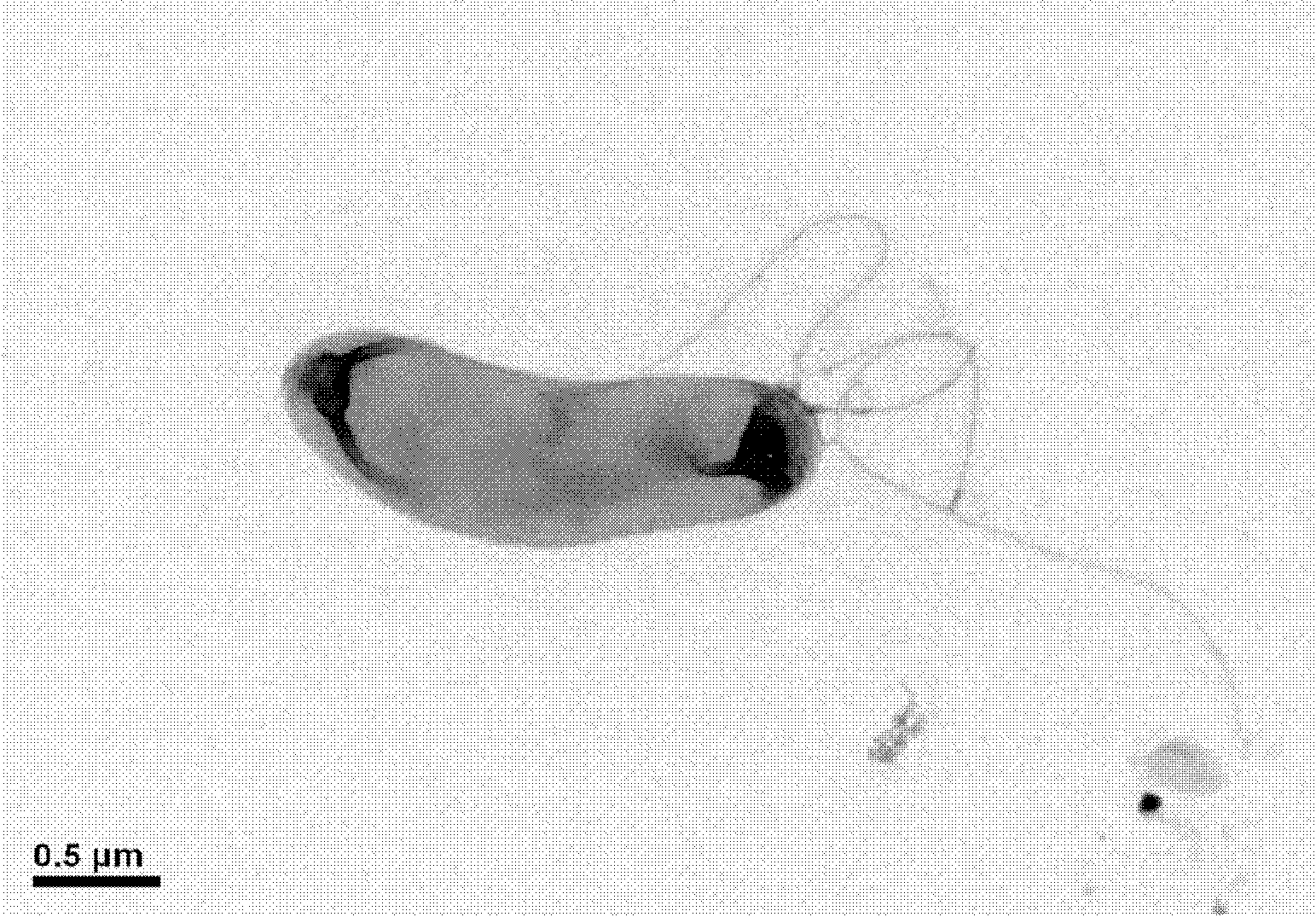Shinella sp. HZN1 capable of effectively degrading nicotine and application thereof
A technology of S. brucei and nicotine, which is applied to S. bacillus HZN1 capable of efficiently degrading nicotine and its application field, can solve the problems of strong irritation, toxicity, inhibition of human central nervous system, etc., and achieves a simple preparation process and good application prospects. , the effect of rapid degradation
- Summary
- Abstract
- Description
- Claims
- Application Information
AI Technical Summary
Problems solved by technology
Method used
Image
Examples
Embodiment 1
[0017] Embodiment 1: Screening and identification of strains
[0018] Medium:
[0019] Inorganic salt medium: NaCl 1g, K 2 HPO 4 1.5g, KH 2 PO 4 0.5g, (NH4) 2 SO 4 1.5g, MgSO 4 0.1g, 1ml trace element solution, made up to 1000ml with distilled water, mixed and stirred evenly, the natural pH value, made after high-pressure steam sterilization (121°C, 20min), and the trace element solution was prepared as follows: MnSO 4 ·H 2 O 0.13g, ZnCl 2 0.23g, CuSO 4 ·H 2 O0.03g, CoCl 2 ·6H 2 O 0.42g, Na 2 MoO 4 2H 2 O 0.15g, AlCl 3 ·6H 2 O 0.05g, make up to 1000ml with distilled water.
[0020] Enriched culture solution: Add nicotine to the inorganic salt culture solution so that the concentration of nicotine is 200mg / L.
[0021] LB culture medium: yeast powder 10g, peptone 5.0g, sodium chloride 10.0g, distilled water to make up to 1000ml, mixed and stirred evenly, natural pH value, prepared after high-pressure steam sterilization (121°C, 20min).
[0022] LB solid ...
Embodiment 2
[0028] Embodiment 2: bacterial agent preparation
[0029] 1. Inoculate the strains stored in the liquid test tube in 40ml of inorganic salt culture solution for activation and culture for 4 days;
[0030] 2. Inoculate the activated bacteria into 100ml of LB liquid medium containing 50-500mg / L nicotine, culture at 30°C and 150rpm until logarithmic growth phase;
[0031] 3. Centrifuge (6000rpm) the above-mentioned bacterial solution in logarithmic growth phase for 3 minutes, discard the supernatant, and suspend the bacterial cells with an appropriate amount of phosphate buffer solution with a pH value of 7.0, which is the microbial agent.
[0032] The formula of 0.2mol / L phosphate buffer solution with a pH of 7.0 is: take 39ml of 0.2mol / L sodium dihydrogen phosphate and 61ml of 0.2mol / L disodium hydrogen phosphate, dilute to 1000ml with ultrapure water, and steam under high pressure It can be obtained after sterilization (121°C, 20min).
Embodiment 3
[0033] Embodiment 3: Nicotine degradation experiment
[0034] Detection of bacterial concentration and nicotine content in inorganic salt culture solution:
[0035] In this experiment, the growth of bacteria was detected by ultraviolet spectrophotometer, which was expressed by measuring the absorbance value of bacteria at 600nm.
[0036] In this experiment, reversed-phase high-performance liquid chromatography was used to detect the residual amount of nicotine in the inorganic salt culture solution. High performance liquid chromatography (HPLC) detection condition: mobile phase is methanol: 1mM H 2 SO 4 =10:90 (volume ratio), the analytical column is Grace Alltima C18 Column (4.6×250mm, 5μm), the flow rate is 0.6ml / min, the injection volume is 20μl, and the column temperature is 30°C.
[0037] Use different concentrations of nicotine solutions for high-performance liquid chromatography detection, and use the nicotine concentration as the abscissa and the absorption peak are...
PUM
 Login to View More
Login to View More Abstract
Description
Claims
Application Information
 Login to View More
Login to View More - Generate Ideas
- Intellectual Property
- Life Sciences
- Materials
- Tech Scout
- Unparalleled Data Quality
- Higher Quality Content
- 60% Fewer Hallucinations
Browse by: Latest US Patents, China's latest patents, Technical Efficacy Thesaurus, Application Domain, Technology Topic, Popular Technical Reports.
© 2025 PatSnap. All rights reserved.Legal|Privacy policy|Modern Slavery Act Transparency Statement|Sitemap|About US| Contact US: help@patsnap.com



